22 Green Flowers That Will Look Stunning Growing Alongside More Colorful Blooms
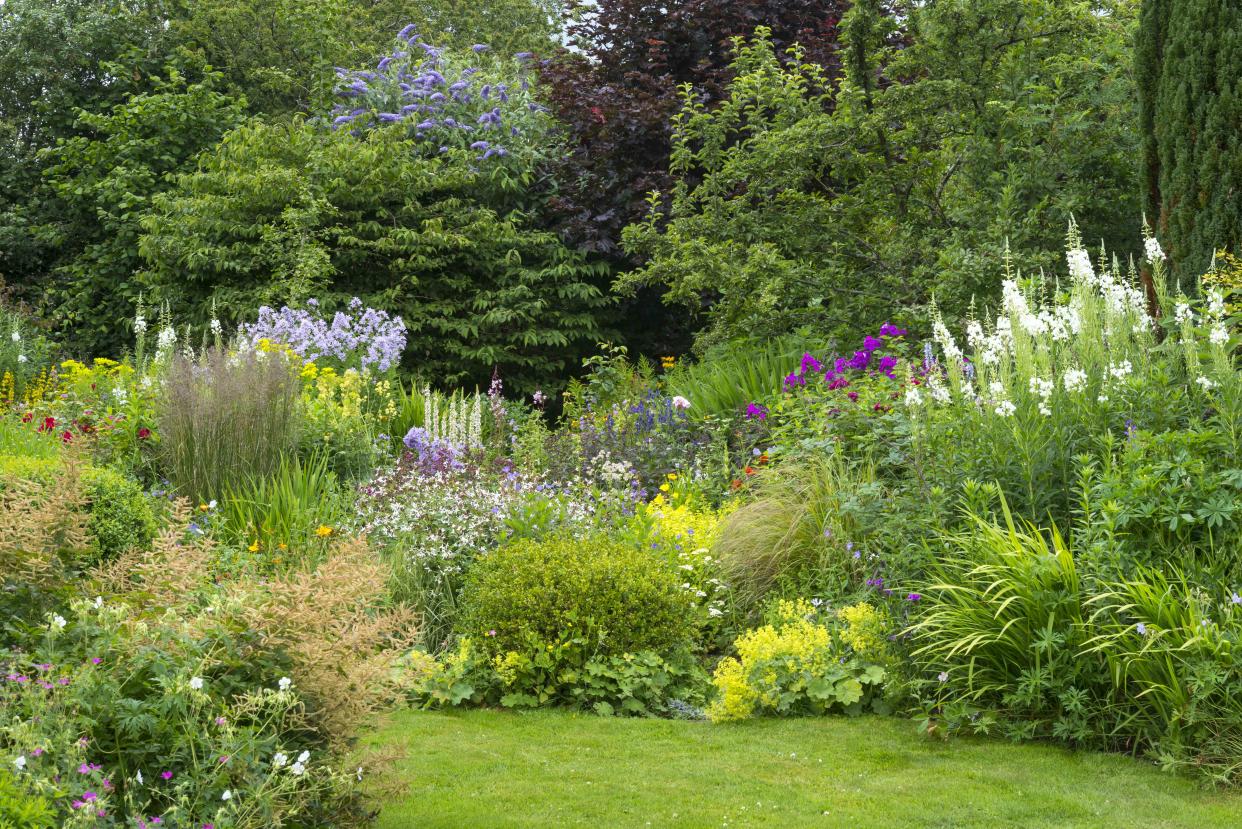
R A Kearton / Getty Images
When you picture a lush flower bed full of beautiful blooms, a whole rainbow of colors might come to mind. Oddly, though, while green is ever-present in our gardens, it’s not as common for the blossoms themselves to be this hue.
If you’re looking to change that, we’ve got you covered. We rounded up some of the most stunning green flowers to grow in your gardens, with tips and advice from the experts on how to keep them happy, healthy, and thriving.
From kelly green to bold chartreuse, here are our favorite green flowers we hoping to see more of in our home gardens.
Hydrangea
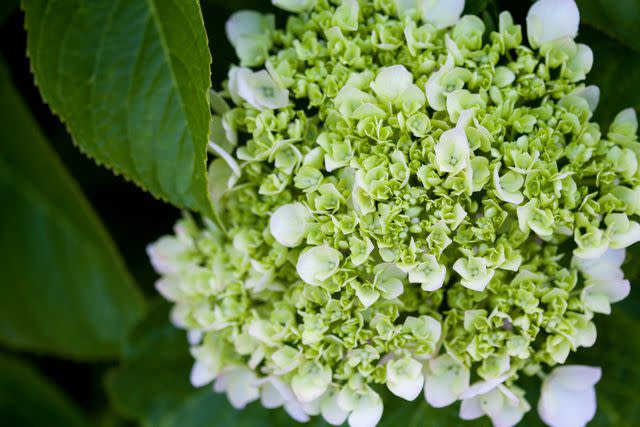
Maria Dattola Photography / Getty Images
As fluffy and beautiful as their other pastel-colored counterparts, green hydrangea are a bold spin on this summer superstar. With large, round blossoms attached to thin but strong stems, green hydrangea are a beautiful garden shrub that can also be brought inside for a stunning summer arrangement.
USDA Growing Zones: 3-9
Blooming: Late June through August
Sun: Partial shade preferred
Soil: Moist, well-drained soil rich in organic matter, with the pH likely to affect color
Size: 2-6 ft. tall and 2.4 ft. wide
Gladiolus
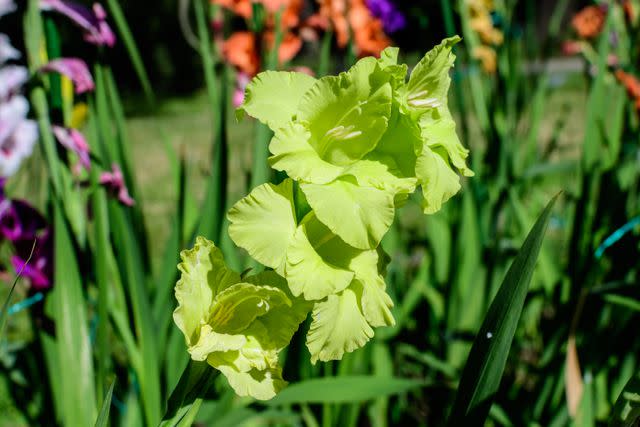
Cristina Ionescu / Getty Images
These elegant stunners are known to be easy to grow from bulbs, and their dramatic, fluttery blooms are a perfect late-summer staple.
USDA Growing Zones: 7-10
Blooming: Late summer, ninety days after planting
Sun: Full sun or partial shade
Soil: Fertile and well-drained with consistent moisture
Size: 2 to 4 ft tall with a 1-ft spread
Bells of Ireland
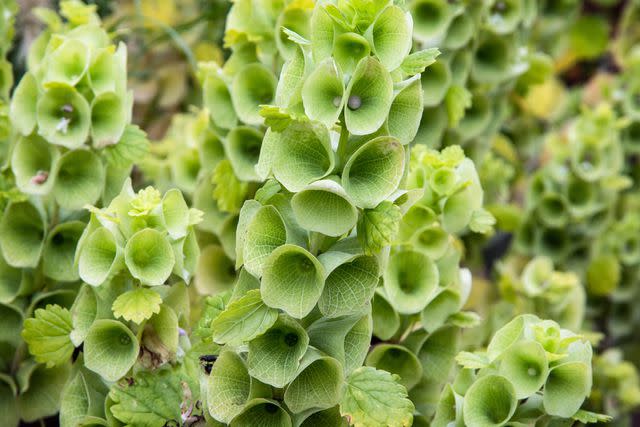
Vrabelpeter1 / Getty Images
The Bells of Ireland represent luck and are also known as the shellflower, thanks to their blooms which are decidedly both bell and shell-shaped. They’re apple green in color and delicate in appearance, perfect for wherever vertical space is needed to be filled.
USDA Growing Zones: 2-11
Blooming: May through mid-July
Sun: Full and partial
Soil: Moist and well-drained
Size: 2-3 ft. tall
Green Envy Zinnia
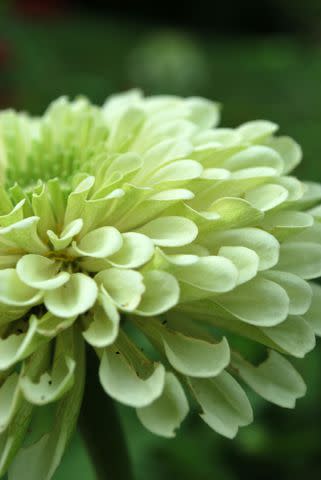
danahann / Getty Images
If you’re looking for a stunning garden flower you can easily cut and transport inside, try the Green Envy Zinnia. It presents striking chartreuse blooms, and it is one of Letier's favorite flowers to cut and use as a centerpiece—it mixes beautifully with white hydrangeas.
USDA Growing Zones: 2-11
Blooming: Early summer through the first frost
Sun: Full sun preferred and will not bloom with less than six hours of direct sunlight per day
Soil: Well-draining soil rich in organic matter
Size: 3-3.5 ft.
Green Spider Chrysanthemum
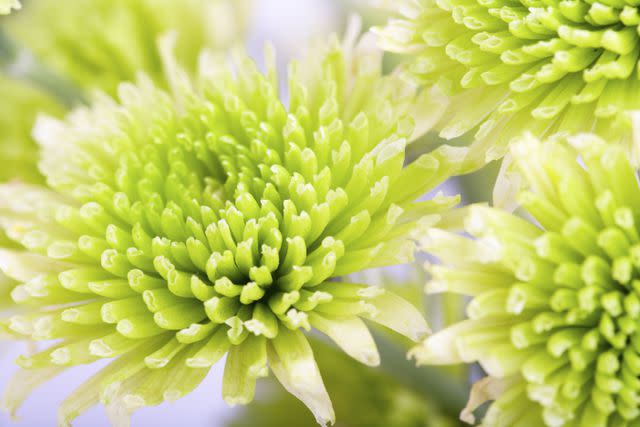
ChristopherBernard / Getty Images
According to Letier, the Green Spider Chrysanthemum is an excellent way to add a whimsical touch of green to your garden or home. She notes that this particular flower has a long vase life after cutting.
Also known as the spider mum and the Anastasia green chrysanthemum, these beauties are named for their large flowering heads with petals shaped like spider legs.
USDA Growing Zones: 5-9
Blooming: For two weeks in late September through early October
Sun: Full and partial
Soil: Well-drained, acidic
Size: 1–3 ft. tall and 1–2 ft. wide
Green Goddess Calla Lily
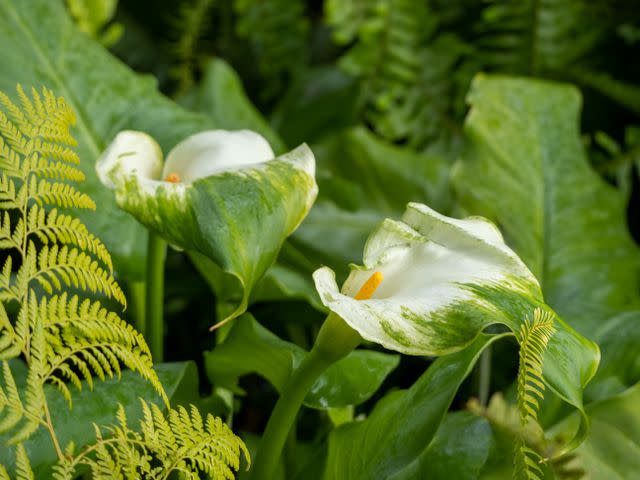
lynnebeclu / Getty Images
White calla lilies are a wedding day favorite, but Letier notes the Green Goddes Calla Lily offers an elegant trumpet-shaped bloom that pops as a stand-alone flower.
USDA Growing Zones: 6a-10b
Blooming: May to August
Sun: Full sun to dappled shade
Soil: Humusy, rich, and moist
Size: 2-3 ft. wide and 2-3 ft. tall
Carnation
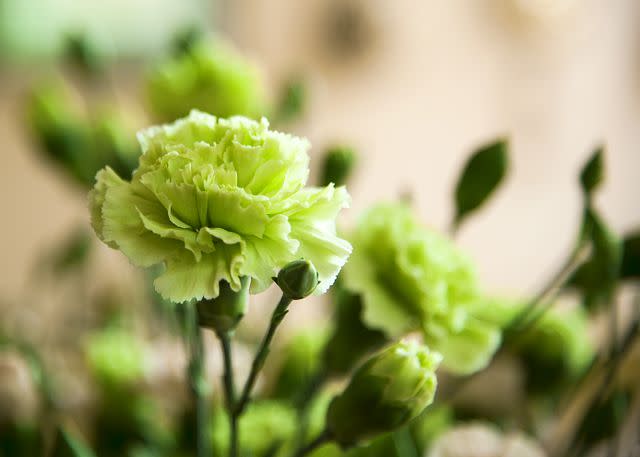
Images say more about me than words / Getty Images
Most commonly compared to roses and appreciated for their affordability, carnations can often be found in a subtle green that manages to be both pale and bright. They work particularly well as cut flowers in an arrangement.
USDA Growing Zones: 7-10
Blooming: May through July
Sun: Full and partial
Soil: Well-drained
Size: From 6 inches up to 2 feet tall, and 10-14 inches wide
Boat Orchid
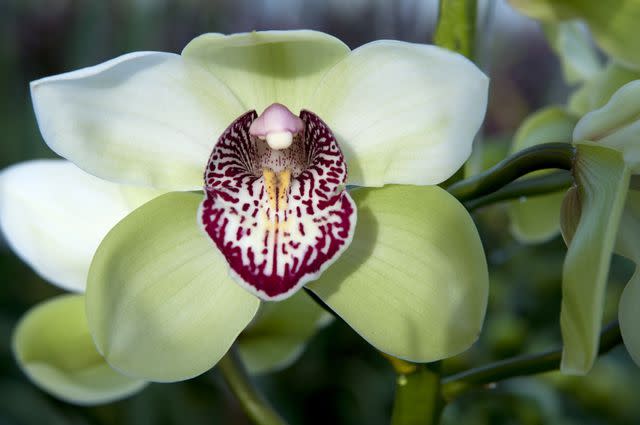
AnjoKanFotografie / Getty Images
Cymbidium orchids, also known as boat orchids, come in a range of colors—including a stunning, bold chartreuse with a deep purple center.
USDA Growing Zones: 10-12
Blooming: October through May
Sun: Partial
Soil: Loamy, moist, and well-draining
Size: 1-1.5ft tall and 1-2ft wide.
Euphorbia
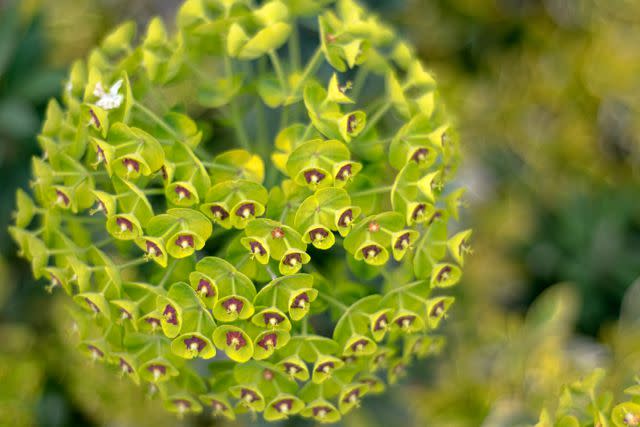
Eve Livesey / Getty Images
If you’re looking for something long-lasting and visually interesting, Foster says you can’t go wrong with euphorbia. Cultivars like Euphorbia x martinii, also known as "Ascot Rainbow," amp it up at bloom time with a cloud of tiny round chartreuse flower bracts.
USDA Growing Zones: 6-8, with possible protection needed in cooler climates
Blooming: Late spring to early summer, primarily June and July as it does not do well in hot, humid summers
Sun: Full sun to partial shade
Soil: Dry to medium soils that are moist and well-drained, intolerant to clay soils
Size: 2-3 ft. tall and 1.5-2 ft. wide
Green Hellebore

Eve Livesey / Getty Images
Also known as the Helleborus viridis, green hellebore is a toxic but beautiful plant. The blooms are often compared to a buttercup, with five large green petals framing a scattering of smaller yellow petals at its center. They’re especially suited to mass planting for a dramatic and dazzling effect.
USDA Growing Zones: 6-9
Blooming: February to June
Sun: Shade in summer and sun in winter
Soil: Moist but well-drained
Size: 1 ft. tall and 1 ft. wide
Lady’s Mantle
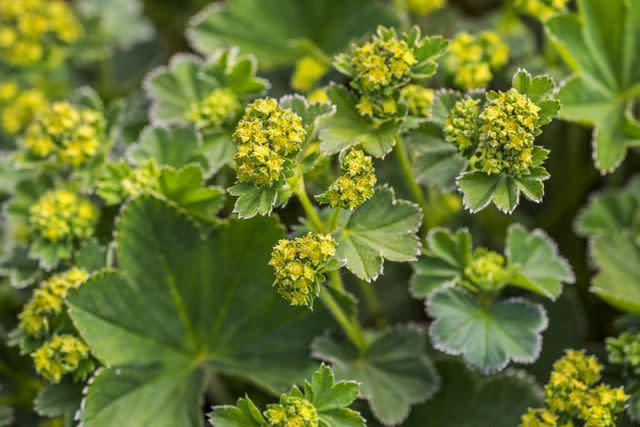
Philippe Clement / Arterra / Getty Images
Lady’s mantle, also known as alchemilla mollis, is another favorite of Foster’s. Its gentle, low-mounding foliage is beloved for catching dew droplets in a captivating way all season, says Foster, who notes it’s also an extremely tolerant plant.
Best of all, if you remove the flowering stems during their first bloom, Foster says you might luck out again later in the summer with a light rebloom.
USDA Growing Zones: 3-8
Blooming: May to August
Sun: Full sun, part shade, and shade
Soil: All types of soil with good moisture, no preference for acidic versus alkaline
Size: 1-1.5 ft. tall and 1-1.5 ft. wide
Ranunculus
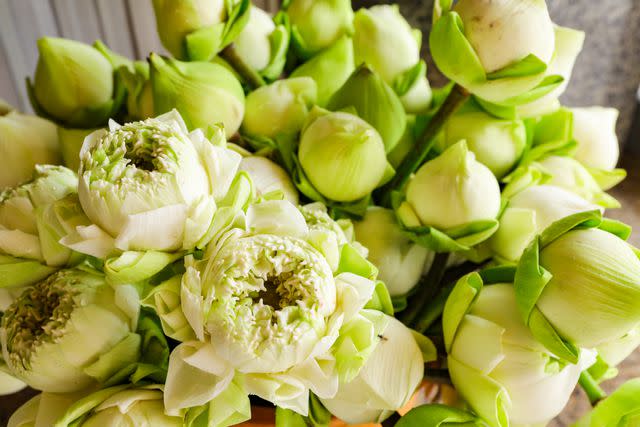
nitimongkolchai / Getty Images
Ranunculus are widely beloved for their delicate, papery blooms, and green ranunculus are noted for their creamy blossoms with eye-catching green centers.
USDA Growing Zones: 8-10
Blooming: March through May
Sun: Full sun
Soil: Light, well-drained soil
Size: Up to 2 ft. tall
‘Green Thumb’ Amaranthus
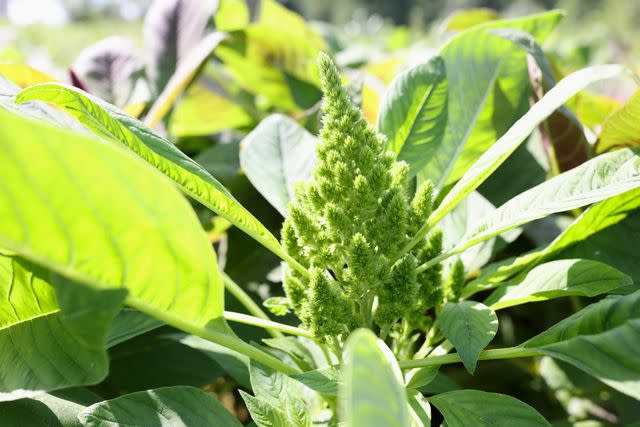
megaflopp / Getty Images
The ‘green thumb’ amaranthus is decidedly quirky, known for its conical apple-green blooms that look like spikes. It’s perfect for borders and gaps to add depth and interest.
USDA Growing Zones: 3-10
Blooming: June through August
Sun: Full sun
Soil: Well-drained
Size: 1.5-2 ft tall
Jack in the Pulpit
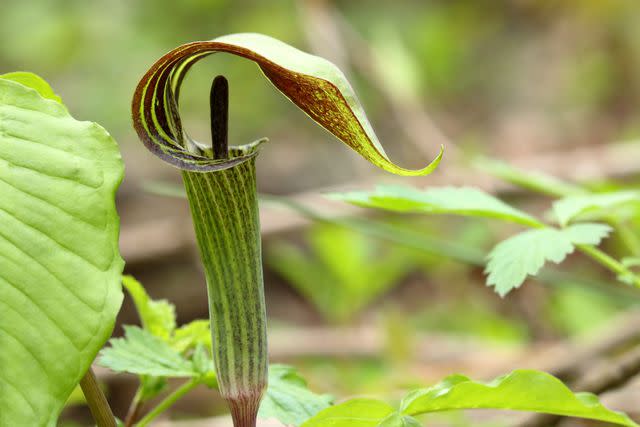
MelodyanneM / Getty Images
If you’re looking for a truly unique flower that thrives in shady areas, Foster suggests the pitcher-like shape of Jack-in-the-Pulpit. It’s the best-known example of the Arisaema genus and is truly spectacular, says Foster.
USDA Growing Zones: 4a-9a
Blooming: April to May
Sun: Partial to full shade, too much sun can impede blooming
Soil: Moist and humus-like
Size: 1-2 ft. tall and 1-2 ft. wide
Flowering Tobacco
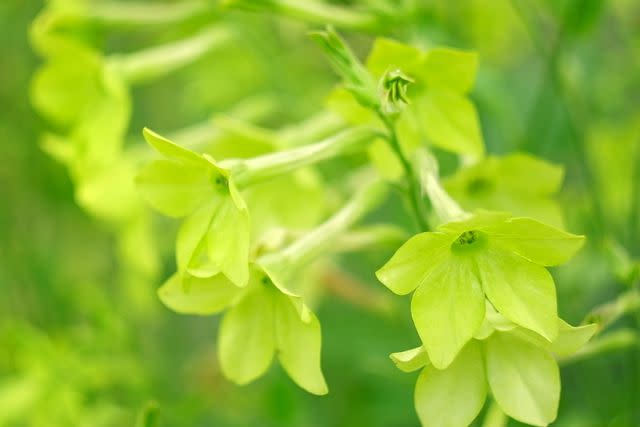
Marina Demidiuk / Getty Images
Notable for its heavy fragrance and beautiful lime green flowers, the nicotiana 'lime green' variety of flowering tobacco resembles small trumpets on long, delicate stems.
USDA Growing Zones: 10-11
Blooming: July to September
Sun: Full sun or part shade
Soil: Moist and well-drained
Size: 1-3 ft. tall with a 1-2 ft. spread
Dahlia
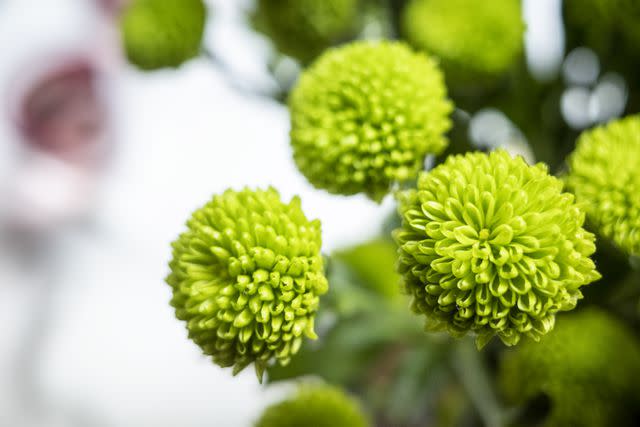
lingqi xie / Getty Images
Similar to the green envy zinnia, green dahlias are known for their large, round blooms. They’re said to celebrate new beginnings and change, making them an excellent housewarming gift.
USDA Growing Zones: 8-10
Blooming: Mid-summer through first frost
Sun: Full sun
Soil: Well-drained and sandy, but can tolerate heavy clay soils
Size: 1-6 ft. tall and 1-3 ft. wide
Rosa chinensis (Viridiflora)
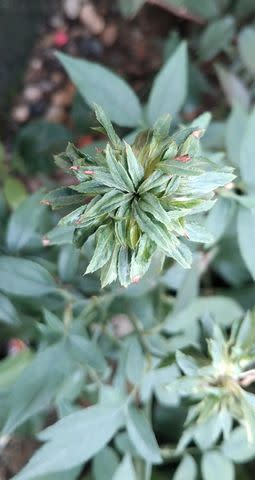
Aida Fiteri / Getty Images
Also known as the viridiflora, the green rose is considered unusual and unique. The blooms don’t technically have petals, but are instead made of leaves and often feature streaks of brown and pink tones.
USDA Growing Zones: 5-11
Blooming: Early summer to late fall
Sun: Full sun
Soil: Moist but well-drained
Size: Up to 4 ft.
Spring Green Tulips

Leonsbox / Getty Images
Spring green tulips are known for their delicate, papery ivory petals streaked through the center with a green stripe along what’s known as the mid-vein. They’re subtle yet eye-catching and work well to offset brighter tulip varietals.
USDA Growing Zones: 3-8
Blooming: Late spring
Sun: Full sun
Soil: Rich, fertile, well-drained soil with medium moisture
Size: 1-2 ft.
Dianthus
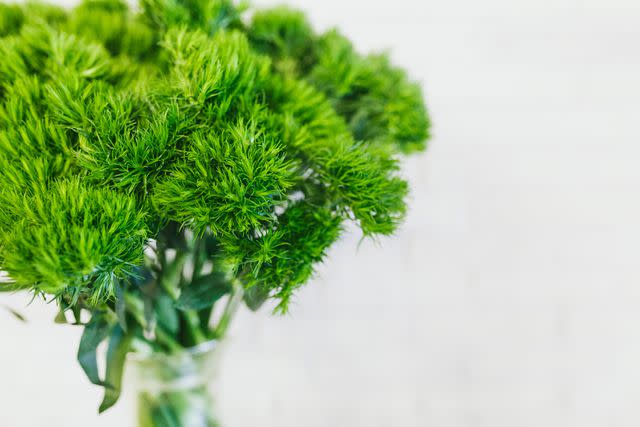
Dmitrii Anikin / Getty Images
Given their Seussical appearance, it’s no surprise the green dianthus has a wide array of alternative names. From ‘Green Ball’ to ‘Sweet William,’ these fluffy, perfectly round balls are lime green and whimsical.
USDA Growing Zones: 4-8
Blooming: April to September
Sun: Full sun with afternoon shade in hot climates
Soil: Organically rich and well-drained
Size: 10" to 2-ft. high and 8” to 1-ft. spread
Daylily
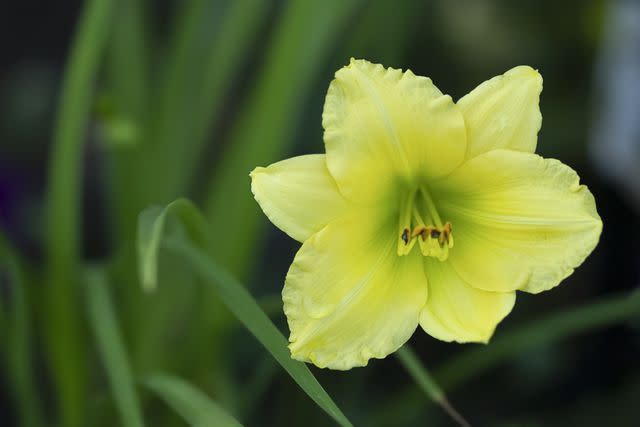
Anna Richard / Getty Images
While peace lilies are known for their huge, white blooms, green daylilies provide a smaller, softer hue that sits somewhere between pale yellow and chartreuse—mostly at its center. Described as carefree, they’re beloved perennials for their ease and surprising toughness.
USDA Growing Zones: 4-9
Blooming: Midsummer through early fall
Sun: Full sun or part shade
Soil: Almost any but prefer fertile and well-drained
Size: 1 to 4 ft. high
Green Jewel Coneflower
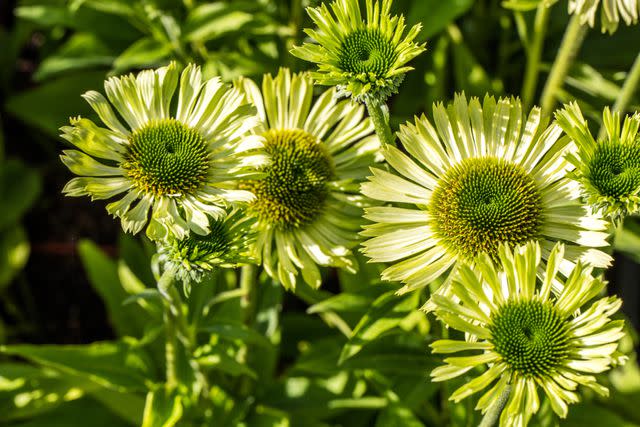
Studio Grand Web / Getty Images
If you’re looking for an easy, adaptable, and fun little flower, the green jewel coneflower is your answer. They’re bright and fun in color and known to be great for attracting pollinators.
USDA Growing Zones: 3-8
Blooming: Summer to early fall
Sun: At least four hours daily
Soil: Not too wet or too fertile
Size: 1.5-2 ft. high and 12-18 inches wide
Lisianthus
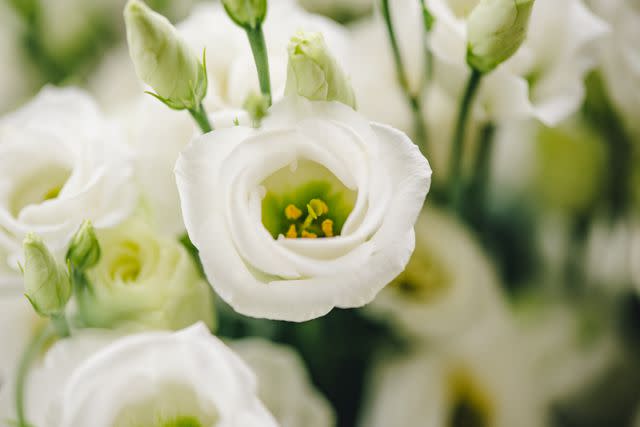
Cavan Images / Getty Images
Also known as the Japanese rose, lisianthus have a gentle, unfurling bloom that can last for up to four weeks.
USDA Growing Zones: 8-10
Blooming: July through September
Sun: Full sun to part shade
Soil: Well-drained and neutral to alkaline
Size: 2-6 ft. tall and 2-4 ft. wide
Why Green Flowers Are a Rarity
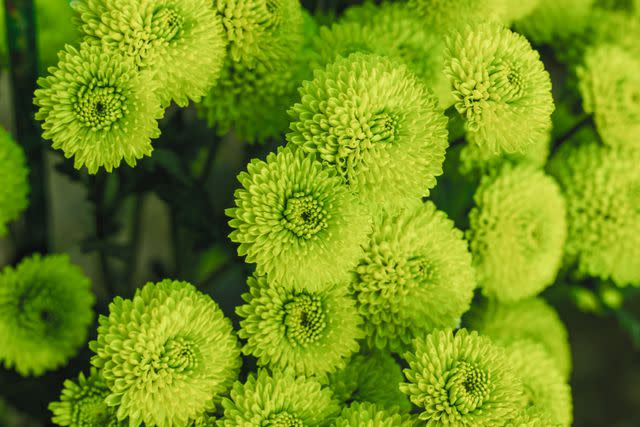
Mariya Obidina / Getty Images
It’s not your imagination—green flowers aren't the most common. Megan Foster, perennial and bulb expert for American Meadows, explains there’s a reason for it.
“This is a fun botany topic—it has everything to do with what attracts pollinators,” Foster says, noting that the answer is twofold.
Green flowers aren't as likely to attract pollinators as their brighter counterparts, meaning they rely on other pollination strategies. As a result, the horticultural industry hasn’t seen as much of a demand to develop more green-flowering plants.
Allison Futeral from Crimson Horticultural Rarities loves using them in floral design. “We are used to seeing leaves as green, not flowers, but it creates a really cool monochromatic look—they are great mixed into an arrangement with other flowers," she says.
Tips for Growing and Enjoying Green Flowers
While all plants have different needs, Donna Letier, founder and CEO of Gardenuity says there are some general rules of thumb when it comes to encouraging your green flowers to thrive.
“The soil matters on green flowers,” Leiter says, who adds coffee grounds to her soil. “Nitrogen enhances their green color. Green flowers require a little extra attention, but the results are well worth it.”
Read the original article on The Spruce.

